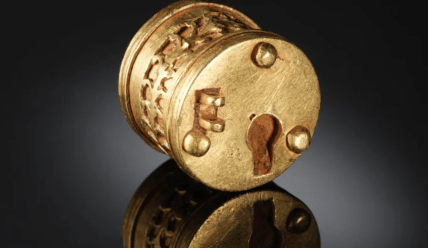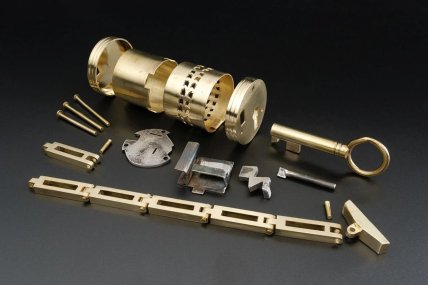A unique Roman gold coin-sized lock was discovered in Germany (photo).
Sometimes treasures are found in unexpected places. In Greece, an ancient statue was discovered in a bag near a trash bin, while in Germany, metal detecting expert Konstantin Fried uncovered a miniature Roman gold lock from the 3rd century during a survey of a field near Petershagen-Frielle.
Following reports about the find, experts confirmed that this item is a rare example of a miniature cylindrical lock used in ancient times to secure chests and containers. Its dimensions are only 1.2 by 1.1 cm, roughly the size of a 1 hryvnia coin, and it is made of gold with sculptural decorations.

The lock consists of two cylindrical plates fastened together with gold rivets. To study the internal iron mechanism, 3D neutron computer tomography was utilized at the Paul Scherrer Institute (Switzerland).

Based on the scanning, researchers were able to reconstruct the design and create a working model at an enlarged scale. Archaeologists believe that the lock arrived in Westphalia as military loot, merchandise, or a souvenir from a Roman soldier. The lock holds not only technical significance but also illustrates the cultural connections of local elites with the Roman Empire.
Previously, "Telegraph" reported how the location of the last Anglo-Saxon king of England's palace was confirmed thanks to a toilet and other discoveries. His exact burial site remains unknown; he may be buried under a local church.